Kanamono
The term kanamono, which literally translates to "gold items," refers to all of the ornamental components that embellish samurai armor. The ō-yoroi ornamented with bamboo and tiger themes from the 12th century, which is preserved in the Kasuga Taisha temple in Nara, is the most well-known example of such decorations, which in this case take on the connotations of true masterpieces of goldsmithing. This armor is unquestionably a votive artefact and was created for the aim of being presented to the temple; consequently, it was not typical for samurai to enter battle wearing such elaborately designed armor.
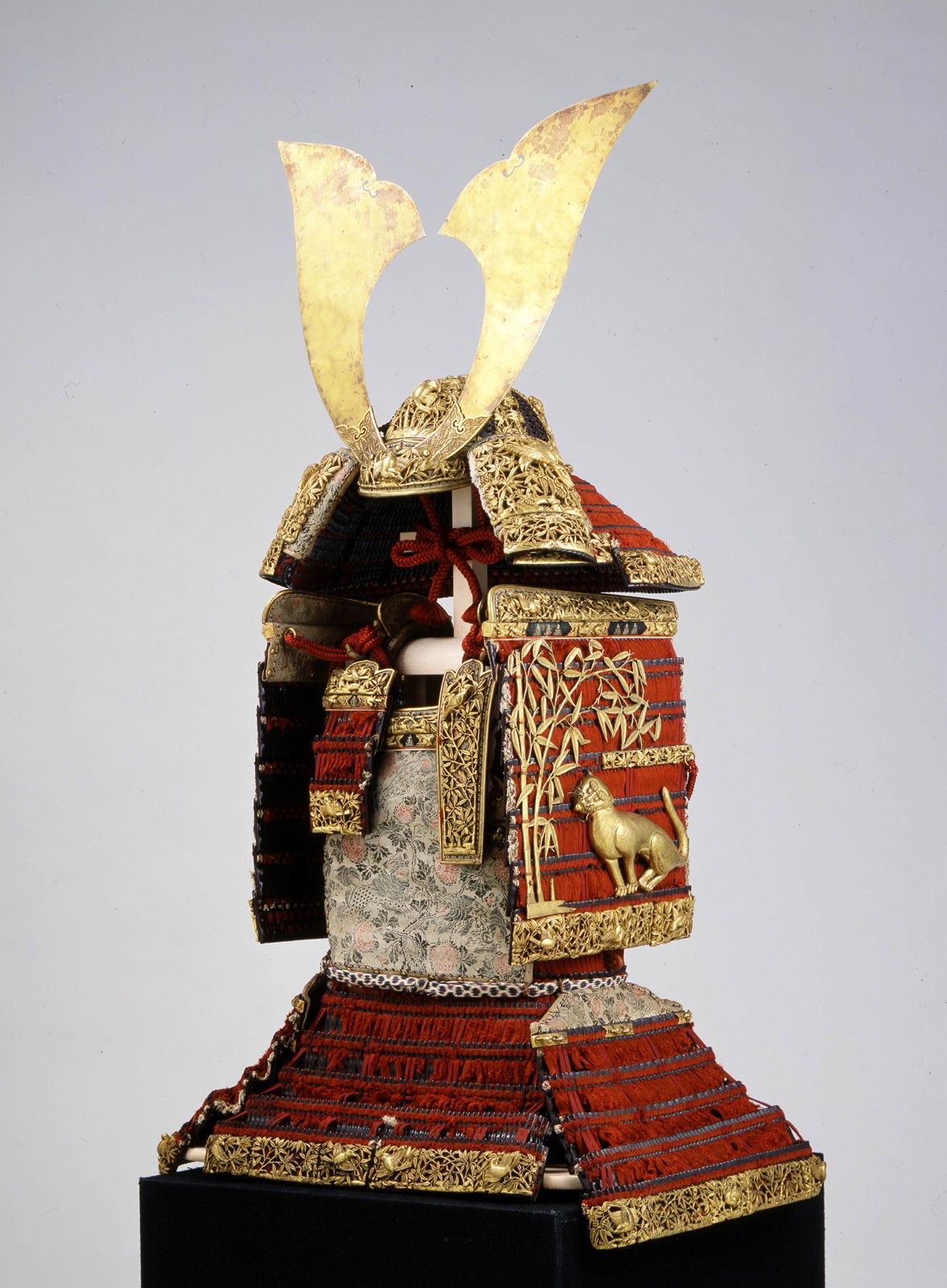
Regular armor from the Kamakura period has small gilded copper applications in specific locations, such as the upper portion of the shoulder guards (sode), the two front protectors of the laces securing the shoulder straps, the plate surrounding the ring on the back, and of course the visor and fukigaeshi of the kabuto. Interestingly, these elements would remain unchanged throughout the centuries, undergoing only a reduction during the sengoku jidai (Warring States period) in order to simplify the construction of samurai armor. As early as the 18th century, however, kanamono reappeared to Japanese armor, particularly that of daimyō and other high-ranking samurai, sometimes inheriting the same designs as the ō-yoroi of the Kamakura era and sometimes recreating its decorative themes.
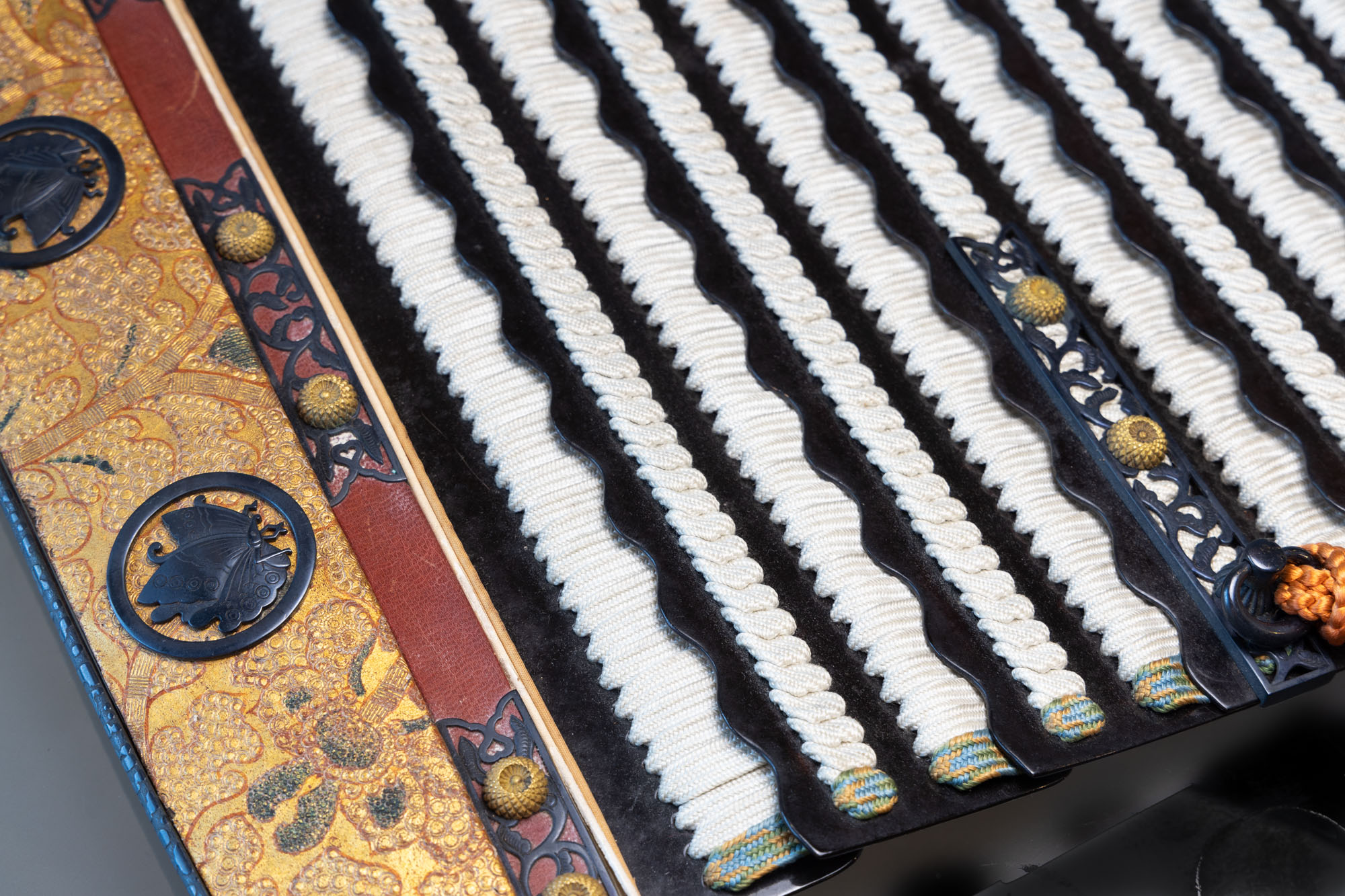
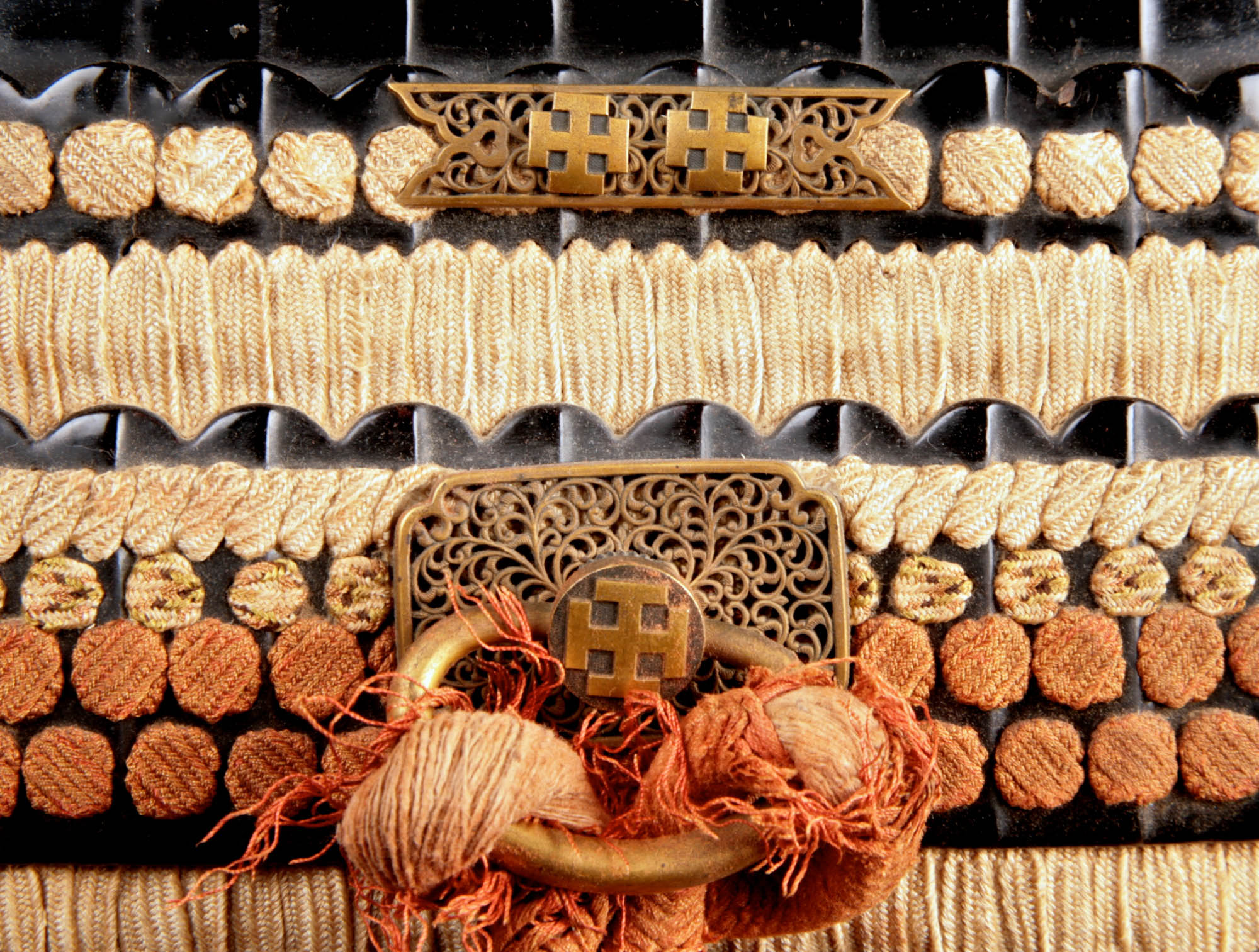
The material remains the same, gilded copper, although kanamono are occasionally seen in shakudo, an alloy of gold, copper, and silver that remains black but acquires an attractive purplish tint. The existence and quality of high-grade kanamono is an immediate and dependable indicator of the significance of samurai armor.

The kanamono that decorates the hachimanza, that is, the hole at the top of the kabuto, merits a distinct consideration. This type of ornamentation is known as tehen-no-kanamono and is often composed of many chrysanthemum-shaped layers of varying hues wrapped around a cylindrical framework. This element's style has evolved over the years and can be used to date the kabuto.
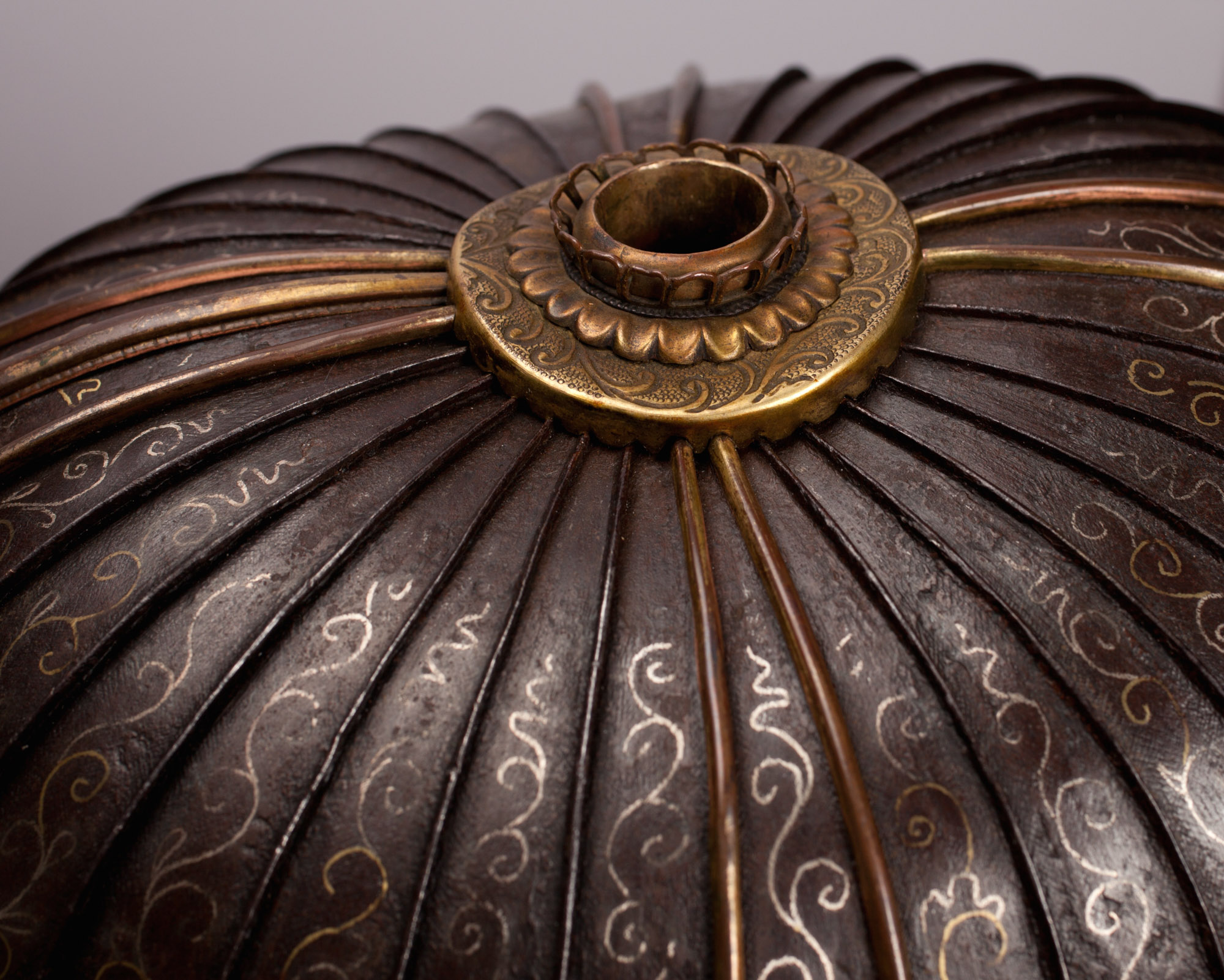
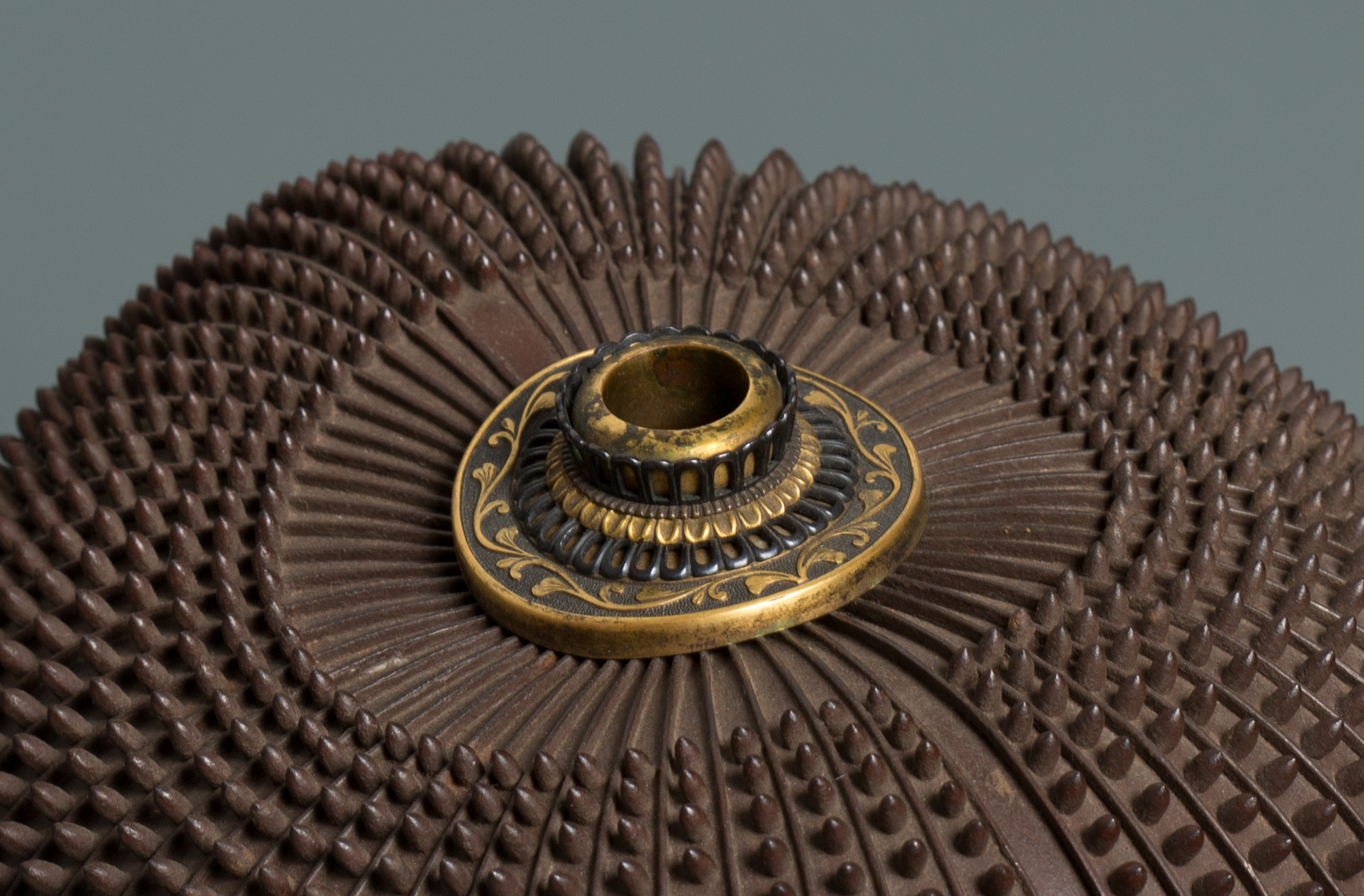
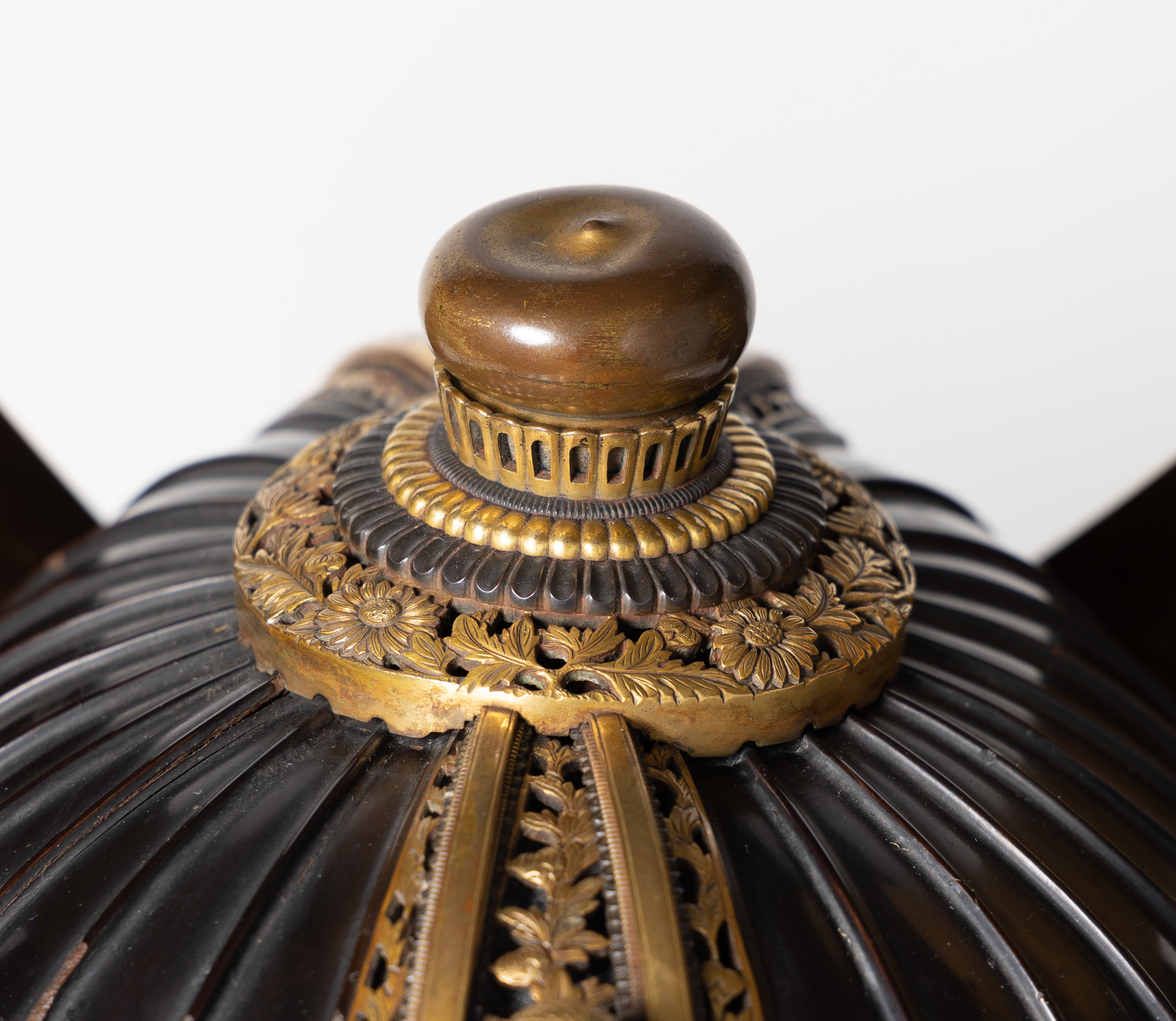
Copyright © 2016 - giuseppe piva - VAT: 05104180962

